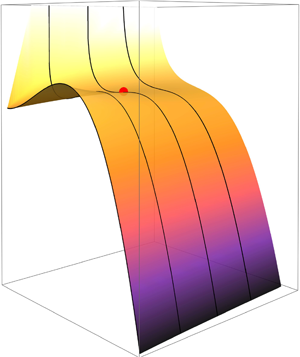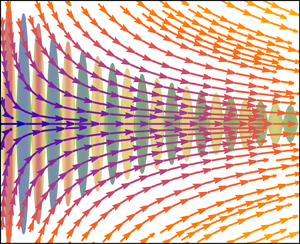Refine listing
Actions for selected content:
1416829 results in Open Access
JME volume 52 issue S1 Cover and Back matter
-
- Journal:
- Journal of Law, Medicine & Ethics / Volume 52 / Issue S1 / Spring 2024
- Published online by Cambridge University Press:
- 12 July 2024, pp. b1-b2
- Print publication:
- Spring 2024
-
- Article
-
- You have access
- Export citation
Relating to, through, and beyond rights …
-
- Journal:
- Law & Society Review / Volume 58 / Issue 1 / March 2024
- Published online by Cambridge University Press:
- 27 March 2024, pp. 41-48
- Print publication:
- March 2024
-
- Article
-
- You have access
- Open access
- HTML
- Export citation
On a critical time-harmonic Maxwell equation in nonlocal media
- Part of
-
- Journal:
- Proceedings of the Royal Society of Edinburgh. Section A: Mathematics , First View
- Published online by Cambridge University Press:
- 29 February 2024, pp. 1-45
-
- Article
- Export citation
Crystal structure of ractopamine hydrochloride, C18H24NO3Cl
-
- Journal:
- Powder Diffraction / Volume 39 / Issue 2 / June 2024
- Published online by Cambridge University Press:
- 29 February 2024, pp. 94-104
-
- Article
-
- You have access
- Open access
- HTML
- Export citation
Effect of gas content on cavitation nuclei
-
- Journal:
- Journal of Fluid Mechanics / Volume 982 / 10 March 2024
- Published online by Cambridge University Press:
- 29 February 2024, A4
-
- Article
-
- You have access
- Open access
- HTML
- Export citation
PEM series 2 volume 67 issue 1 Cover and Front matter
-
- Journal:
- Proceedings of the Edinburgh Mathematical Society / Volume 67 / Issue 1 / February 2024
- Published online by Cambridge University Press:
- 29 February 2024, pp. f1-f2
-
- Article
-
- You have access
- Export citation
Notes on Dialectics: C. L. R. James's Hegel
-
- Journal:
- Hegel Bulletin / Volume 45 / Issue 1 / April 2024
- Published online by Cambridge University Press:
- 29 February 2024, pp. 144-165
- Print publication:
- April 2024
-
- Article
-
- You have access
- HTML
- Export citation
Postprandial plasma amino acid and appetite responses with ingestion of a novel salmon-derived protein peptide in healthy young adults
-
- Journal:
- British Journal of Nutrition / Volume 131 / Issue 11 / 14 June 2024
- Published online by Cambridge University Press:
- 29 February 2024, pp. 1860-1872
- Print publication:
- 14 June 2024
-
- Article
-
- You have access
- Open access
- HTML
- Export citation
GENERATING FUNCTIONS FOR THE QUOTIENTS OF NUMERICAL SEMIGROUPS
- Part of
-
- Journal:
- Bulletin of the Australian Mathematical Society / Volume 110 / Issue 3 / December 2024
- Published online by Cambridge University Press:
- 29 February 2024, pp. 427-438
- Print publication:
- December 2024
-
- Article
- Export citation
Simple preparation of specimens for X-ray powder diffraction analysis of radioactive materials: an illustrative example on irradiated granite
-
- Journal:
- Powder Diffraction / Volume 39 / Issue 2 / June 2024
- Published online by Cambridge University Press:
- 29 February 2024, pp. 41-46
-
- Article
-
- You have access
- Open access
- HTML
- Export citation
UK national survey on surgical gowning for tonsillectomy
-
- Journal:
- The Journal of Laryngology & Otology / Volume 138 / Issue 8 / August 2024
- Published online by Cambridge University Press:
- 29 February 2024, pp. 845-848
- Print publication:
- August 2024
-
- Article
- Export citation
Acoustic streaming: insights across Reynolds numbers
-
- Journal:
- Journal of Fluid Mechanics / Volume 982 / 10 March 2024
- Published online by Cambridge University Press:
- 29 February 2024, F1
-
- Article
-
- You have access
- HTML
- Export citation
PEM series 2 volume 67 issue 1 Cover and Back matter
-
- Journal:
- Proceedings of the Edinburgh Mathematical Society / Volume 67 / Issue 1 / February 2024
- Published online by Cambridge University Press:
- 29 February 2024, pp. b1-b2
-
- Article
-
- You have access
- Export citation
Ground collision avoidance system with multi-trajectory risk assessment and decision function
-
- Journal:
- The Aeronautical Journal / Volume 128 / Issue 1327 / September 2024
- Published online by Cambridge University Press:
- 29 February 2024, pp. 2038-2053
-
- Article
- Export citation
Glycine supplementation can partially restore oxidative stress-associated glutathione deficiency in ageing cats
-
- Journal:
- British Journal of Nutrition / Volume 131 / Issue 12 / 28 June 2024
- Published online by Cambridge University Press:
- 29 February 2024, pp. 1947-1961
- Print publication:
- 28 June 2024
-
- Article
-
- You have access
- Open access
- HTML
- Export citation
Crystal structure and synchrotron X-ray powder reference pattern for the porous pillared cyanonickelate, Ni(3-amino-4,4′-bipyridine)[Ni(CN)4]
-
- Journal:
- Powder Diffraction / Volume 39 / Issue 1 / March 2024
- Published online by Cambridge University Press:
- 29 February 2024, pp. 20-28
-
- Article
- Export citation
NMJ volume 253 Cover and Front matter
-
- Journal:
- Nagoya Mathematical Journal / Volume 253 / March 2024
- Published online by Cambridge University Press:
- 29 February 2024, pp. f1-f3
- Print publication:
- March 2024
-
- Article
-
- You have access
- Export citation
NMJ volume 253 Cover and Back matter
-
- Journal:
- Nagoya Mathematical Journal / Volume 253 / March 2024
- Published online by Cambridge University Press:
- 29 February 2024, pp. b1-b2
- Print publication:
- March 2024
-
- Article
-
- You have access
- Export citation
Proposed crystal structure of carbadox, C11H10N4O4
-
- Journal:
- Powder Diffraction / Volume 39 / Issue 2 / June 2024
- Published online by Cambridge University Press:
- 29 February 2024, pp. 82-93
-
- Article
-
- You have access
- Open access
- HTML
- Export citation
A longitudinal study of the gut microbiota during the first three years of life: links with problem behavior and executive functions at preschool age – CORRIGENDUM
-
- Journal:
- Development and Psychopathology / Volume 36 / Issue 4 / October 2024
- Published online by Cambridge University Press:
- 29 February 2024, p. 2049
-
- Article
-
- You have access
- Open access
- HTML
- Export citation
















